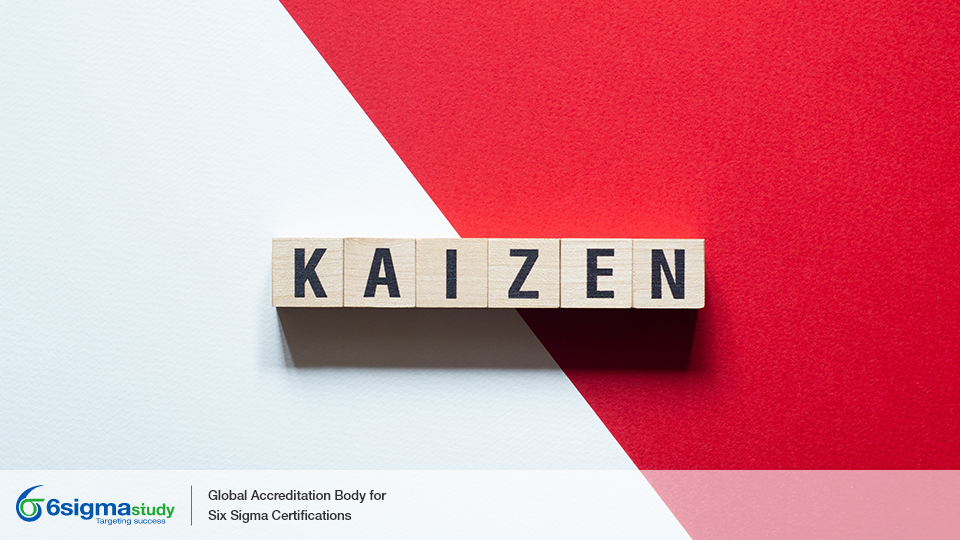Kaizen
Posted by 6sigmastudy® on October 02, 2023 | Six Sigma Tools
Keywords: Six Sigma 6sigmastudy Kaizen Six Sigma Yellow Belt (SSYB™) Six Sigma Green Belt (SSGB™) Six Sigma Black Belt (SSBB™) Lean Six Sigma Green Belt (LSSGB™) Lean Six Sigma Black Belt (LSSBB™) Free Articles Free Six Sigma Articles TQM Six sigma define dmaic dmadv
In an increasingly competitive global landscape, nearly every company and organization are embracing diverse methodologies to enhance their overall management capabilities. Kaizen stands out as a program that champions the idea of continuous improvement, and that's precisely what we aspire to accomplish.
The concept of Kaizen, a philosophy based on continuous improvement, originated in Japan. The word "Kaizen" itself is a fusion of two Japanese terms: "Kai," signifying "continuous," and "Zen," denoting "improvement."
Kaizen strives to enhance the workplace, streamline challenging tasks, and instruct employees on identifying and eradicating inefficiencies in company operations. It can be applied comprehensively to enhance and eliminate waste across all facets of a business, including the manufacturing process.
Core Principle of Kaizen
Kaizen embodies a continuous improvement process is rooted in specific guiding principles:
- Collaborative Teamwork
- Individual Commitment and Discipline
- Elevated Morale and Motivation
- Quality Circles
- Proposals for Enhancement
Steps for Implementing Kaizen
The approach to implementation can vary between organizations, and as a result, there is no one-size-fits-all method for introducing Kaizen. Nevertheless, the six key steps that are typically essential for the successful implementation and realization of Kaizen are as follows:
- Define the scope and objectives of the Kaizen project.
- Continuously provide Kaizen training as needed.
- Identify and validate the root causes of the problem under investigation.
- Discover and put into action effective solutions.
- Develop relevant methods (such as procedures, error prevention measures, control plans, visual cues, and training) to maintain the improvements.
- The Kaizen leader plays a pivotal role in overseeing the implementation and subsequent monitoring of the solutions.
Benefits of Kaizen
As an organization commits to continuous improvement, it stands to gain increased efficiency and effectiveness across all aspects of its operations. Here are a few advantages of implementing Kaizen:
- Waste Reduction
- Enhanced Satisfaction
- Elevated Employee Commitment
- Retention rates rise.
- Bolstering Competitive Advantage.
In summary, if your goal is to enhance the entire organization or a specific department with flexibility in your approach, Kaizen could be the ideal choice. It offers freedom from the need for strict statistical methodologies or stringent scientific standards. Perfection is not the ultimate objective; instead, it focuses on continuous, incremental improvements and encourages active involvement from everyone.
For more such interesting articles on Six Sigma and its concepts, please click here

